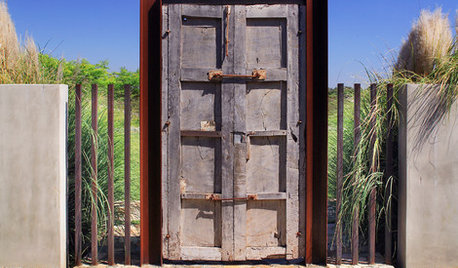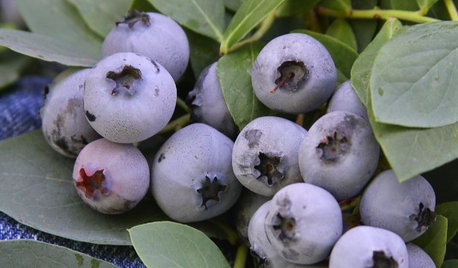Bad soil for beans and cukes
adeleorganicvegan
15 years ago
Related Stories

GARDENING GUIDESThe Poop Scoop: Enrich Your Soil With Good Old Manure
Get over the ick factor already — this natural super-ingredient for soil has so many benefits, you'll wonder why you ever went chemical
Full Story
GARDENING GUIDESThe Art of Green Mulch
You can design a natural garden that doesn’t rely on covering your soil with wood and bark mulch
Full Story
GARDENING AND LANDSCAPINGBuild a Raised Bed to Elevate Your Garden
A bounty of homegrown vegetables is easier than you think with a DIY raised garden bed to house just the right mix of soils
Full Story
FALL GARDENING5 Ways to Put Fall Leaves to Work in Your Garden
Improve your soil and yard the organic way with a valuable garden booster that grows on trees
Full Story
MATERIALSMesquite: The Brawny Beauty for All Over the Home
Denser than other hardwoods and sporting beautiful coloration, mesquite makes a fine material for flooring, countertops, furniture and more
Full Story
EARTH DAY5 Ideas for a More Earth-Friendly Garden
Consider increasing the size of garden beds, filtering rainwater and using plants to reduce energy use
Full Story
FARM YOUR YARDHow to Grow Vegetables in Containers
Get glorious vegetables and fruits on your patio with a pro’s guidance — including his personal recipe for potting mix
Full Story
MOST POPULARHow to Start a Cool-Season Vegetable Garden
Late summer and late winter are good times to plan and plant cool-season crops like salad greens, spinach, beets, carrots and peas
Full Story
GARDENING GUIDES15 Favorites for Your Summer Edible Garden
Get your summer garden off to a good start with these popular fruits and vegetables
Full Story
GARDENING GUIDESOh, Deer! 10 Native Flowers That Stand Up to the Herds
Keeping a garden amid hungry deer can be hard, but these plants should fare well
Full StoryMore Discussions






lorna-organic
Kimmsr
Related Professionals
Edmond Landscape Architects & Landscape Designers · El Sobrante Landscape Contractors · Galveston Landscape Contractors · Gloucester Landscape Contractors · Haverhill Landscape Contractors · Indianapolis Landscape Contractors · North Highlands Landscape Contractors · Pahrump Landscape Contractors · Paramus Landscape Contractors · Welby Decks, Patios & Outdoor Enclosures · Brooklyn Park Decks, Patios & Outdoor Enclosures · Clute Decks, Patios & Outdoor Enclosures · Fredericksburg Decks, Patios & Outdoor Enclosures · Fullerton Decks, Patios & Outdoor Enclosures · South Miami Heights Decks, Patios & Outdoor EnclosuresadeleorganicveganOriginal Author
adeleorganicveganOriginal Author
jean001
adeleorganicveganOriginal Author